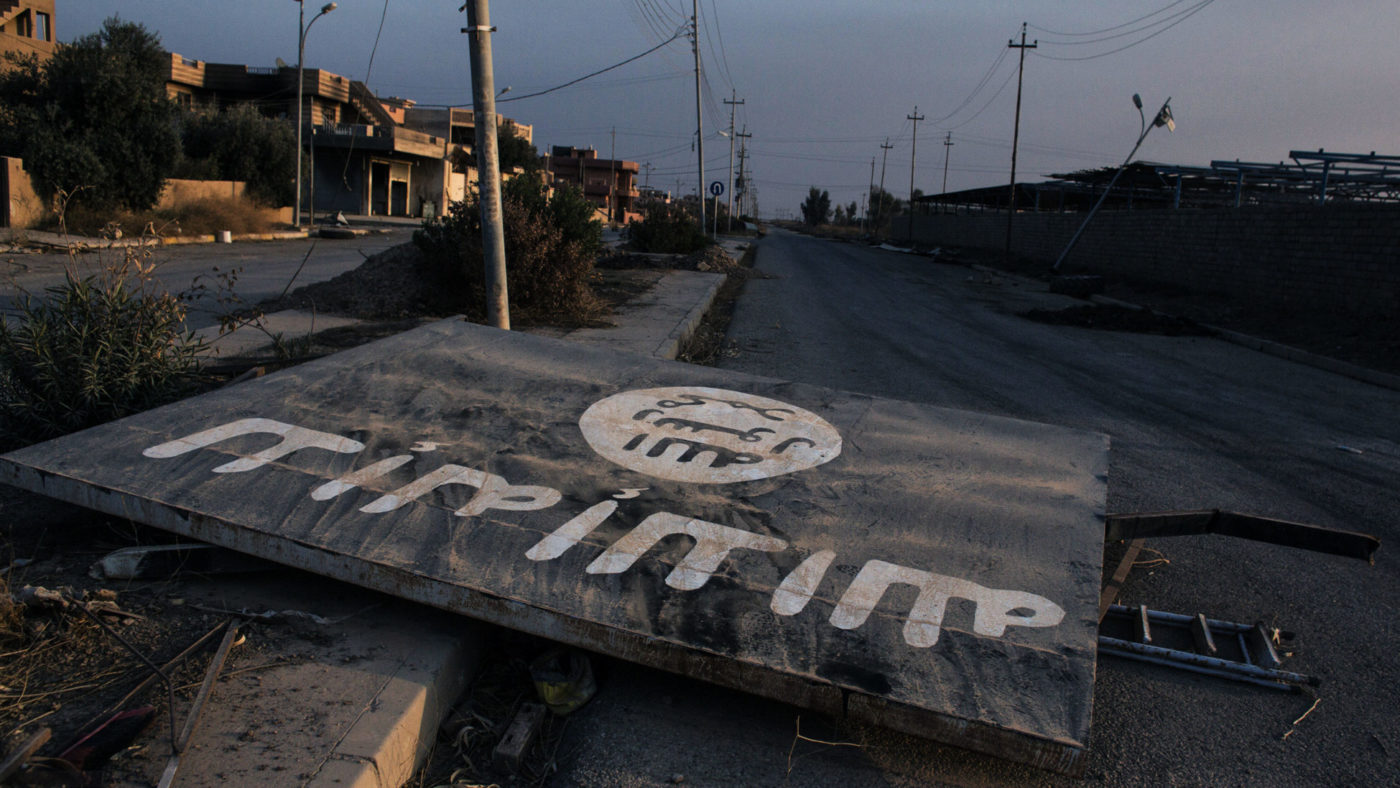They formed part of a terrorist cell which publicly executed Western hostages with sickening brutality. Their murders were relayed to the world in propaganda videos which defined the way their jihadist group, the Islamic State (ISIS), was perceived and discussed.
But now the “Beatles”, as these four jihadis were known, have been broken up. The cell’s most prominent member, Muhammad Emwazi, known in the British press as Jihadi John, was killed by an American airstrike in 2015.
Aine Davis, dubbed Paul, is now in a Turkish prison, having been convicted of terror-related offences last year.
The group’s final two members, George and Ringo, identified as El Shafee Elsheikh and Alexanda Kotey, were still at large until this month. Last week, they were captured by the Kurdish-led Syrian Democratic Forces (SDF), apparently attempting to escape Syria, having fled ISIS’s crumbling caliphate.
It is an ignominious image. ISIS fighters fleeing the destruction of a statelet which, it was promised, would defeat all aggressors and stand the test of time. The maxim of the caliphate when it encompassed its greatest territorial extent was “remaining and expanding”. Neither of those promises have been kept.
So pervasive is the image of ISIS which the “Beatles” helped to create, and so abrupt the apparent reversal the caliphate has suffered, that analysis of both frequently falls short. There was more to ISIS than beheading journalists and aid workers, just as there is more to it now than retreat and collapse.
The basis of ISIS’s theology is thoughtfully examined in two books: The Way of the Strangers, by journalist Graeme Wood, and less directly in Shiraz Maher’s excellent Salafi-Jihadism: The History of an Idea.
Wood’s book includes the testimony of ISIS supporters living in Egypt, Britain and Australia. Some contend that the establishment of a caliphate, of the sort that ISIS’s leader Abu Bakr al-Baghdadi proclaimed in 2014, is non-negotiable. They argue that a man who is descended from the prophet and whole in body, and who controls territory in which he can enforce the sharia, must declare a caliphate and serve as its leader.
This desire was shared by the Islamic State itself. But its leaders were also influenced by expediency. They waited to declare the restoration of a caliphate, doing so after the ground was extensively prepared. They made use of the caliphate idea for rhetorical reasons and propaganda value. But it was not the terminus of a long struggle. Instead, the caliphate was part of a sequence of events in which ISIS and its predecessors have sought varied goals and satisfied divergent ambitions.
The terror group fought a bloody insurgency in Iraq during the American occupation, with no plan for a state-building project. The leader of al-Qaeda in Iraq, as it was then known, Abu Musab al-Zarqawi, attempted to foment conflict and stir up sectarian divisions with acts of terror.
Only later, when ISIS seized its chance first to expand into Syria during that country’s civil conflict, and then to capture a large swathe of territory in Iraq, did the caliphate idea near reality.
There was something of Zarqawi’s brutality in the modus operandi of the “Beatles”. The former also released footage of beheadings, reportedly serving as the executioner himself. That the latter’s brutality was part of the broader propaganda output of a pretend state gave it a unique character. Footage of murder was juxtaposed with promises of a new Eden in the Levant, to which thousands of foreign fighters flocked.
The idealised society ISIS claimed to have created has, of course been proven a false promise. And the primary agents of its brutal propaganda are no longer at large. But this does not mean ISIS is out of ideas.
It was once an insurgency, in Iraq and then in Syria. In both countries it was able to work in ungoverned spaces, operating within local power structures with a mixture of threats and inducement.
Now, as its caliphate falls, ISIS is in prime position to return to insurgency. The Syrian civil war remains chaotic and unending, with numerous armed groups jostling for control and various foreign actors turning the country into a proxy battleground. There is plenty of space for a leaner ISIS or successor organisation, free of the burdens of holding territory, to make itself at home in the sparely populated desert region which borders Iraq.
In Iraq’s Anbar province, a comparable situation is entirely possible, despite the country’s declaration of final victory against the terror state last year.
It would be myopic to assume that the collapse of its caliphate means the end of ISIS. And it would be similarly short-sighted to think that the capture of some of its most visible functionaries marks an end to the group’s brutal ambitions.


